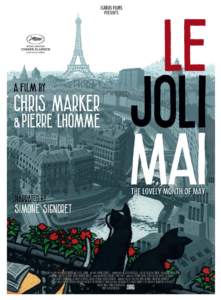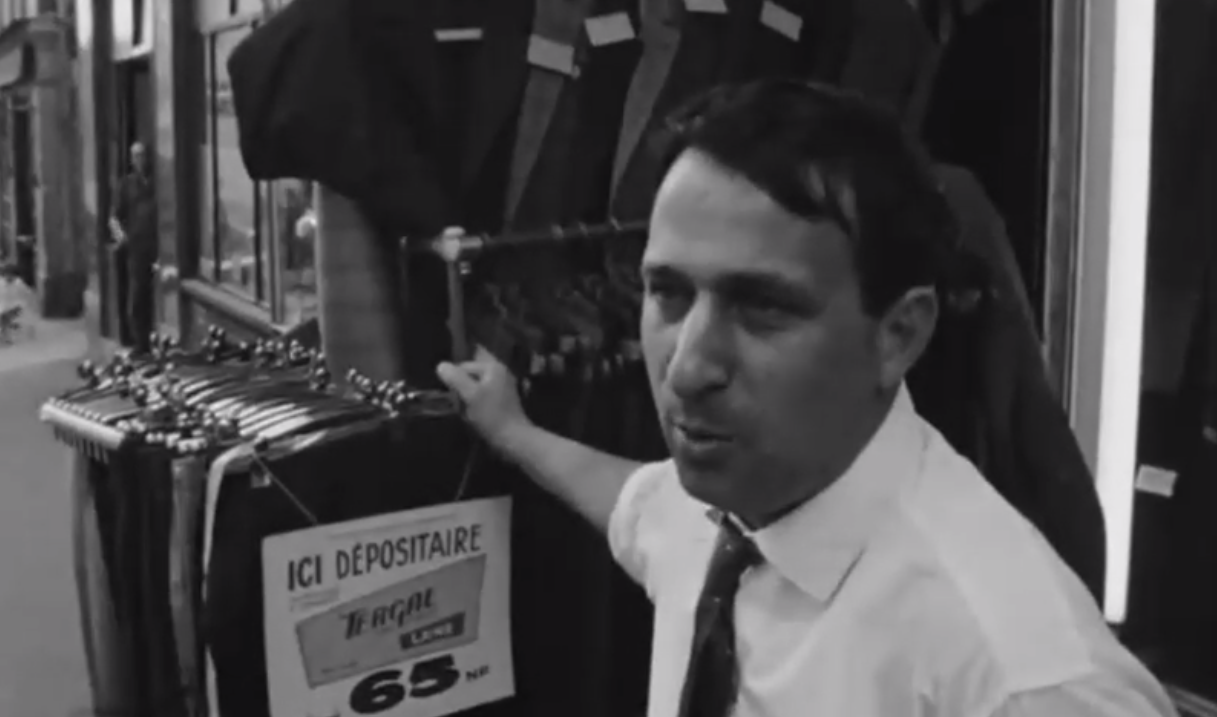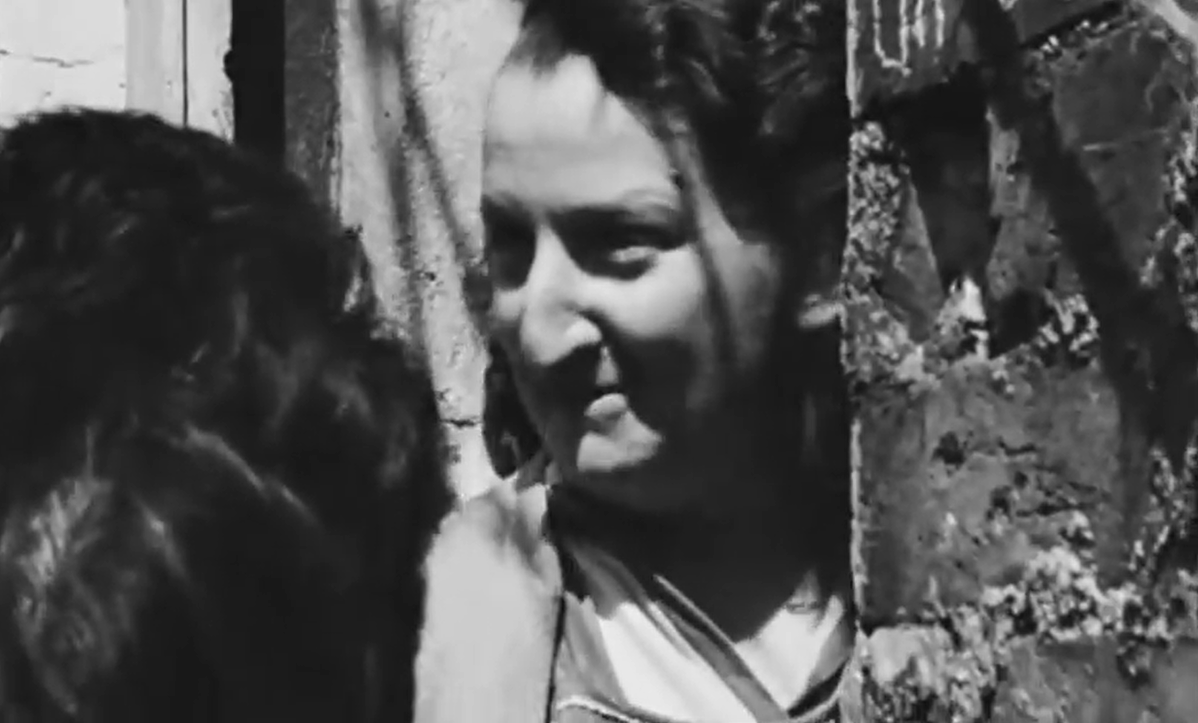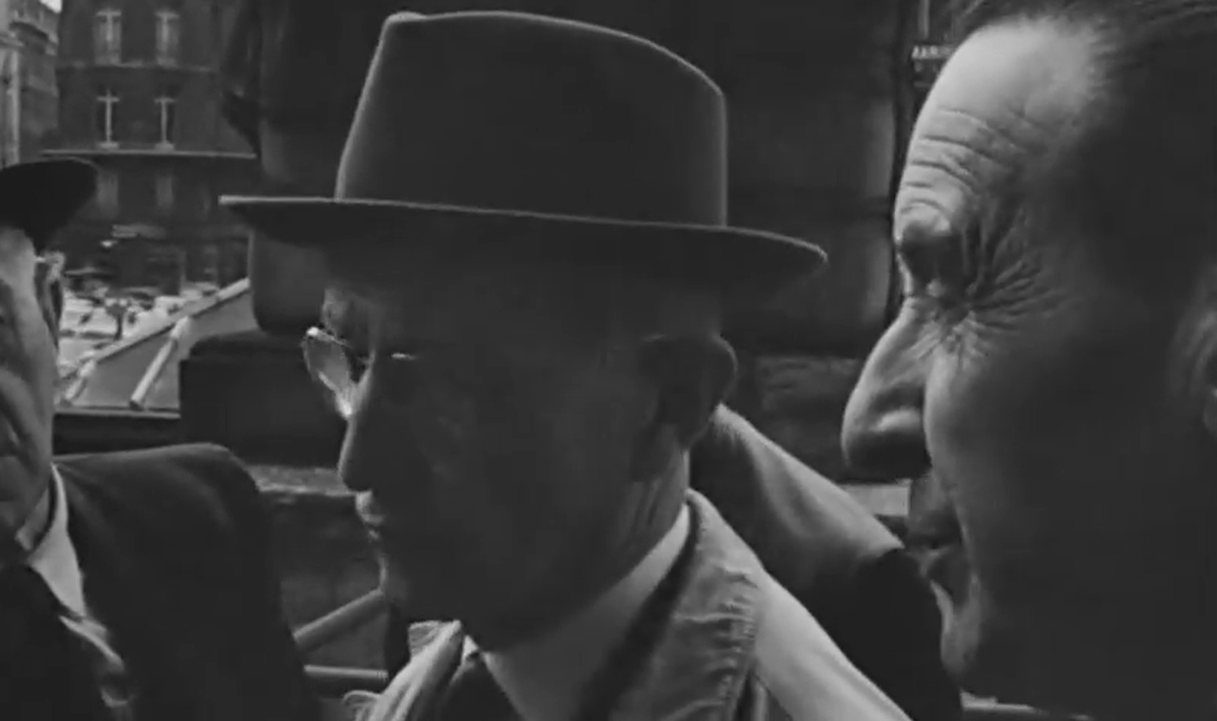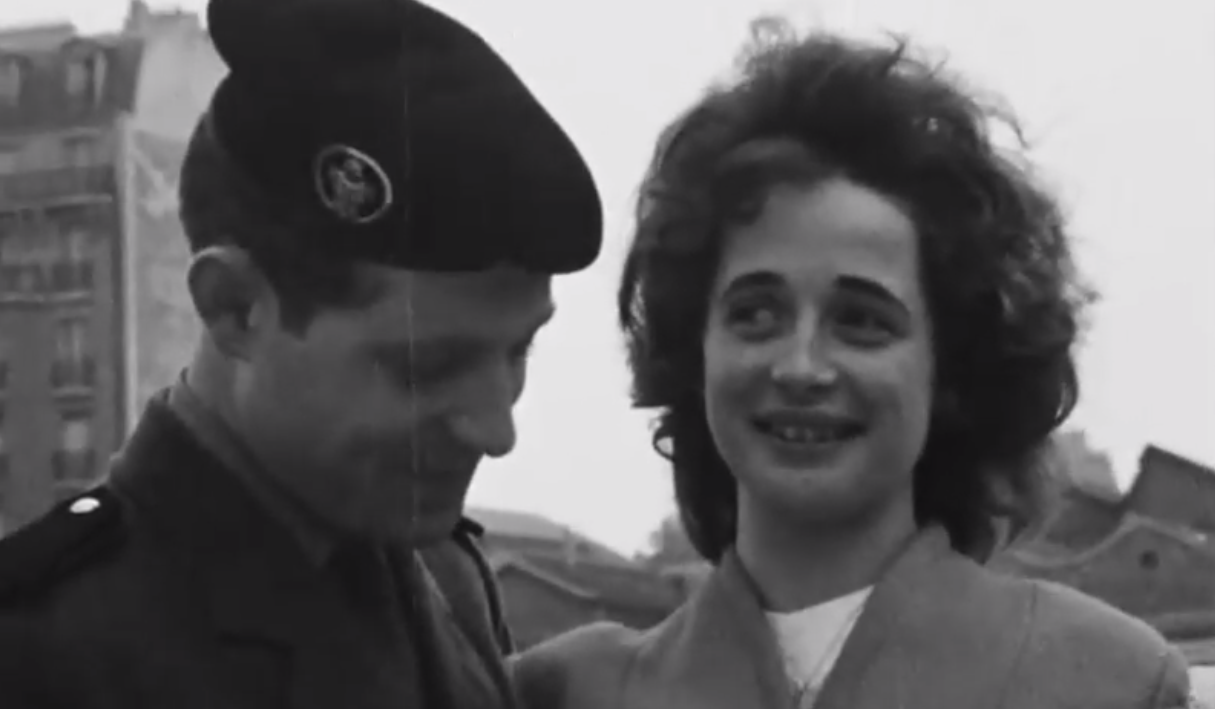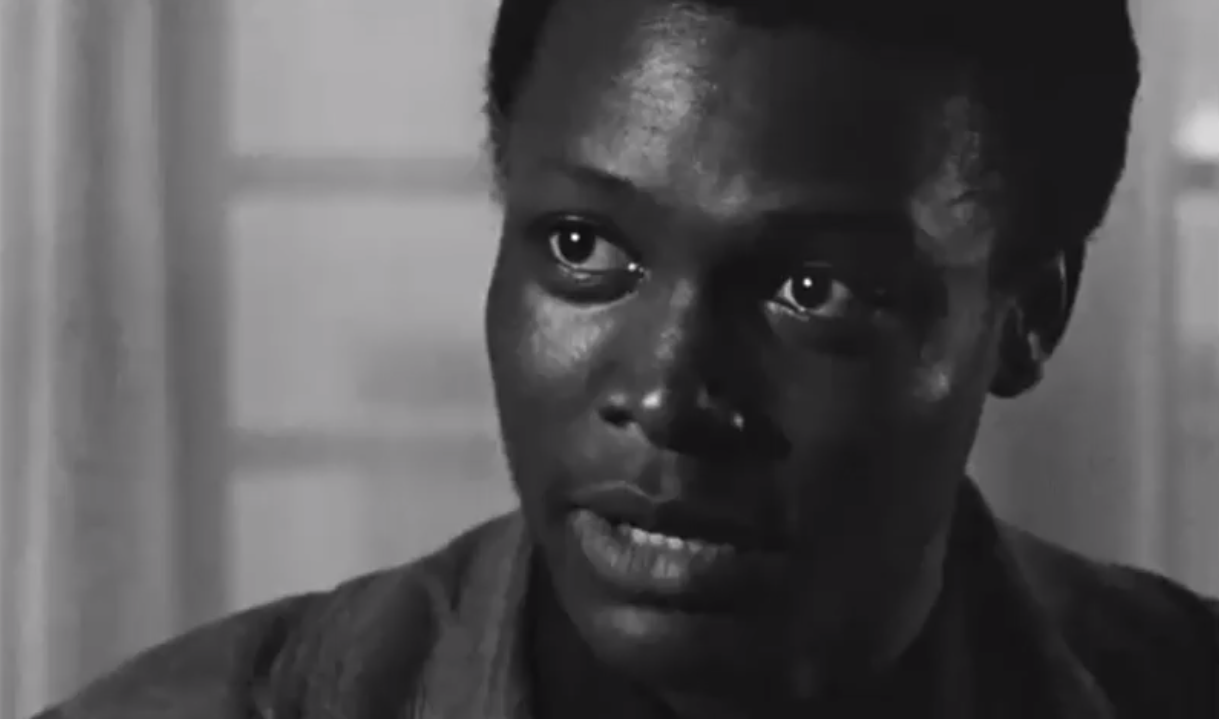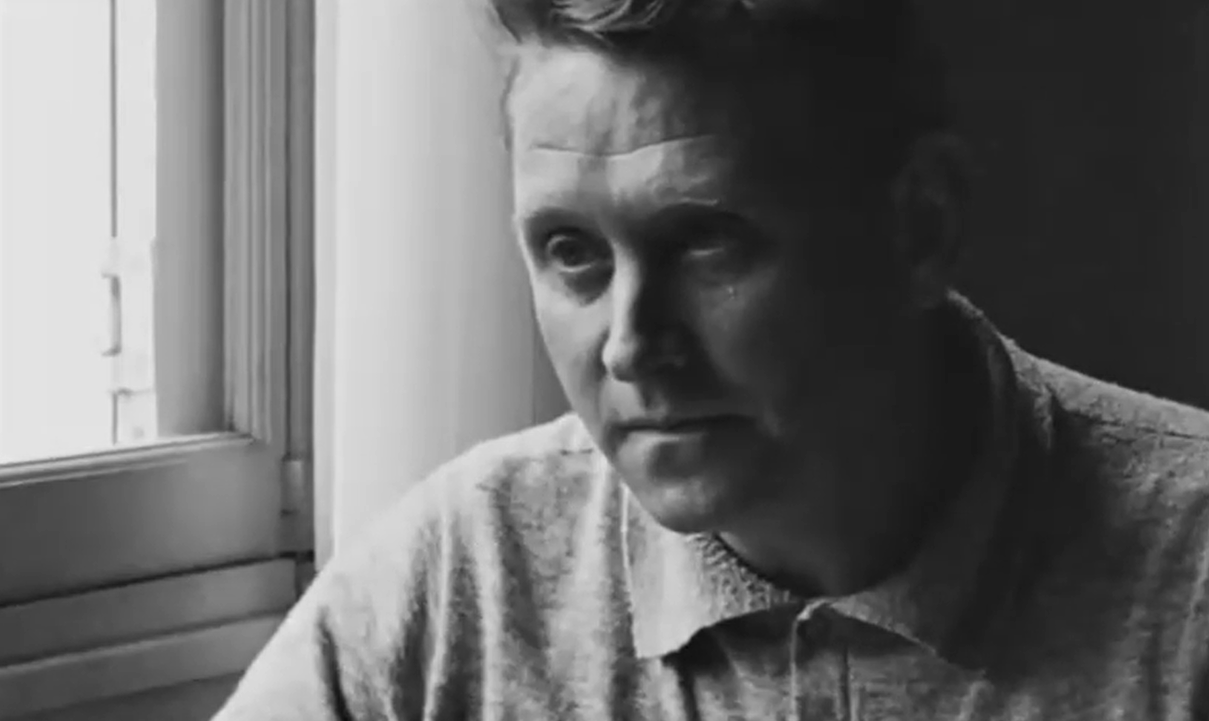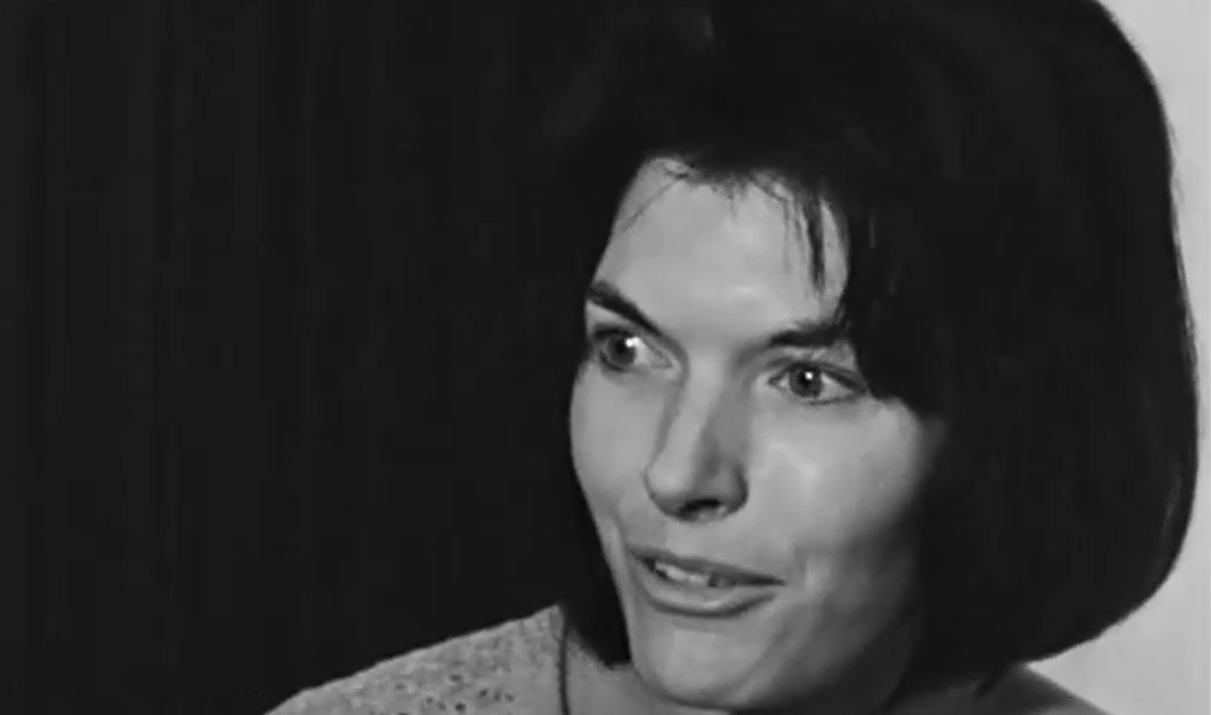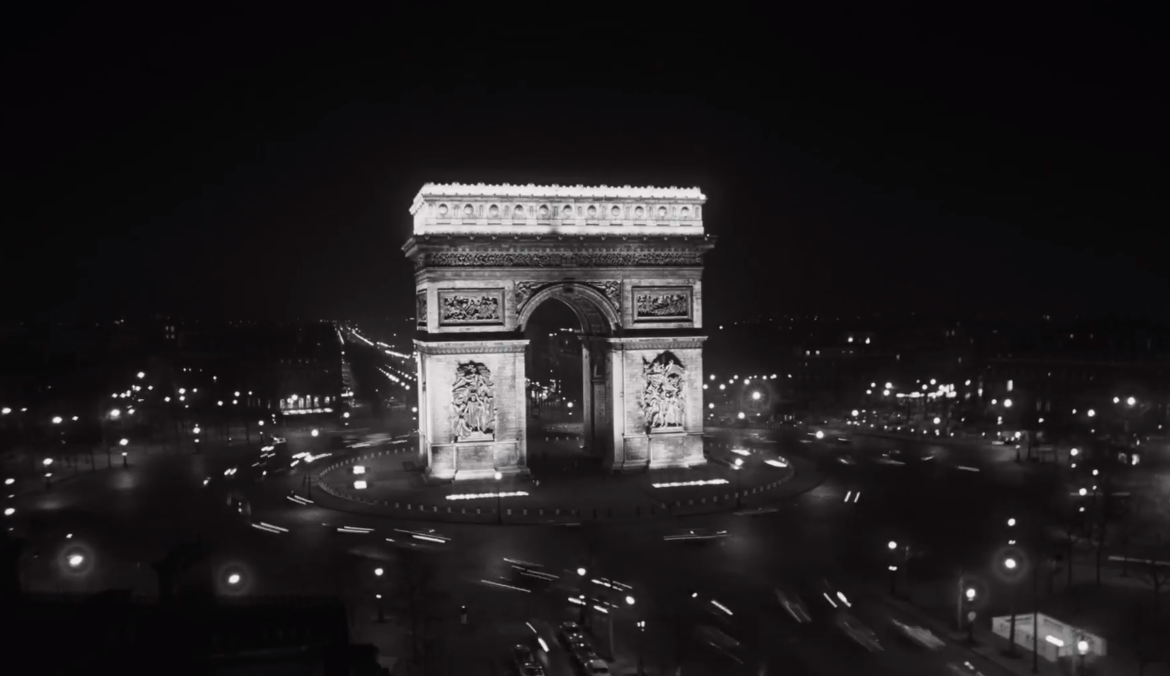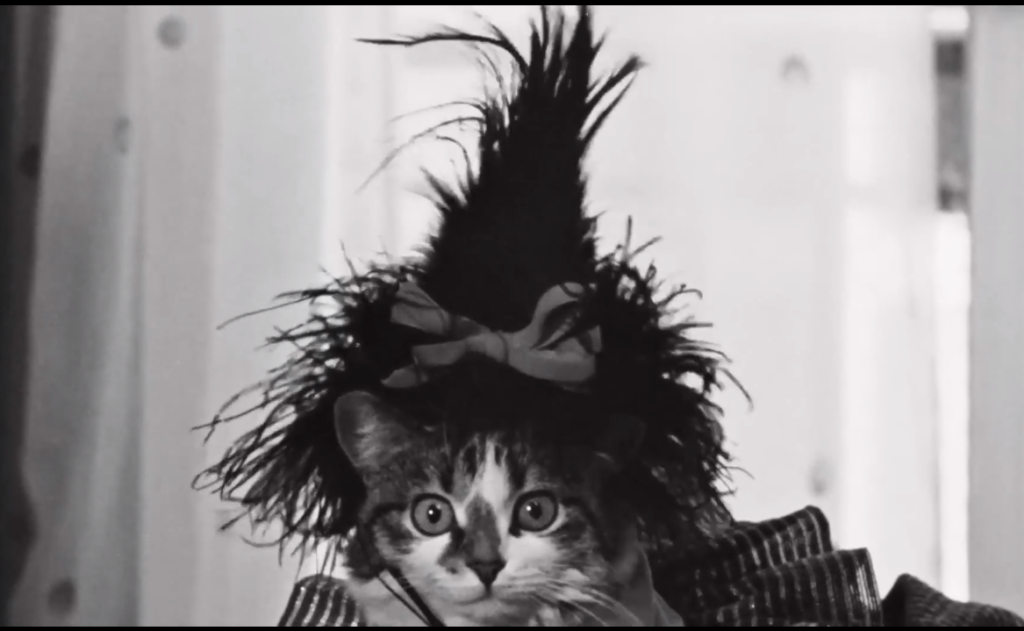Joli Mai, Le (1963)
“Politics, for me, is living well.”
|
Synopsis: |
|
Genres, Themes, Actors, and Directors:
Review: After collecting 55 hours of footage, the resulting ~2.5 hour film — with participants’ interviews left as uninterrupted as possible — was divided into two parts: “A Prayer from the Eiffel Tower” (mostly about everyday life and love) and “The Return of Fantomas” (looking more closely at reactions to the situation in Algeria). Notable instances in the first section include, as described by Margarita Landazuri in TCM’s article, “a suit salesman”: … “a mother of nine children”: … “a group of stockbrokers concerned about how the Algerian situation is affecting the market”: … “children examining a museum display of John Glenn’s space capsule”: … and “a blissfully in love young couple unconcerned about anything but their own happiness.” In the second half, “Among those interviewed are an African student” (from Dahomey): … “and a young Algerian worker who discuss French racism”: … “and a communist priest who chose his political convictions over his church.” Notably, however, “there’s also an eccentric young woman who designs costumes for her cat, saying she does so to escape from those dead things that crush you.” The kind of rhyme or reason you make of all this will likely vary — but regardless, as Landazuri points out, the footage “seems prescient about the political upheavals of the 1960s and beyond, including Paris in 1968.” Note that two versions exist: one narrated in English by Simone Signoret (though there are still subtitles throughout for participants) and one in French by Yves Montand. Notable Performances, Qualities, and Moments:
Must See? Categories
Links: |
